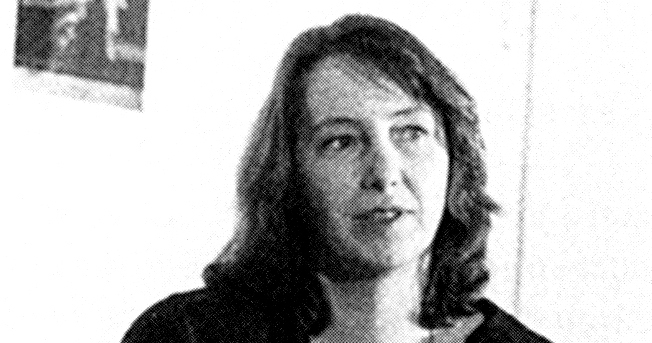Art, gender binaries, and how the shock of the “new” might really be old hat: we visit a group exhibition centered on the work of the late artist Marjorie Keller
On The Verge Of An Image:
Marjorie Keller
On the eve of a group exhibition that reflects on the work of the late artist and activist Marjorie Keller, we travelled to LA and spoke with the curators of the show about art, gender binaries, and how the “new” might really be out of step with our times.
The non-profit arts organisation LAND – Los Angeles Nomadic Division – was established in 2009. Since then they've worked with some of the most highly regarded international contemporary artists currently working, curating over 80 site-specific public projects across the United States. This month LAND open a group exhibition at Pasadena's Gamble House called "On The Verge Of An Image: Considering Marjorie Keller" (8 October–11 November). The show includes sculpture, painting, photography, video, and performance by a broad range of artists, centered around the themes present in the work of the avant-garde filmmaker Marjorie Keller (1950-1994). Keller and her work have been, up until now, relatively under-recognised, but after LA-based artists Alika Cooper and Anna Mayer came across a rare screening of her work, they decided to change that and co-curate this show.
Still from Marjorie Keller's Daughters of Chaos film.
Why do you think it’s a good time to reassess Keller’s work?
Alika & Anna: Technically speaking Keller's work was never properly assessed to begin with. She died young and was uncategorisable while alive, so her work didn't have sustained critical attention at the time. We're visual artists – not filmmakers – who just happened to learn of her work because Alika somewhat randomly saw a rare screening while in New York in 2013. She immediately responded to the films, and showed them to me when she came back to Los Angeles. It was a great relief to see such strong work that doesn't fit perfectly into the 'waves' of feminism that are taught in art schools. Yet the work is radical and very pointedly critiquing gender and its limitations. As feminists we're familiar with the idea the canon is a version of history that some people don't make it into. The canon itself needs to be reassessed. This is a big, ongoing project that can't happen with one art show, one monograph, or any one artist being given their so-called moment. It requires a reworking of classical ideas about monolithic, authoritative narratives, and a restructuring of cultural institutions and their ideologies.
Feminism and activism were close to Keller’s heart, though maybe not an explicit theme in her work. How do you think this side of Keller’s life translates now?
A&A: Keller's work grappled with social issues, using the tropes of what was considered formal innovation at the time as a forum to critique gender and other binaries. She also operated as an activist, which to us is a different route to affecting change than making experimental film or visual art. She's an example of artist-as-citizen. She engaged with the world as an artist, activist, parent, and organiser of screenings of her colleagues' work, not content to restrict her life's work to the studio or editing room.
Carolee Schneemann, Devour:Goya, 2006
Alika Cooper, New Suit Attempt, 2016
Anna Mayer, Can Encount (Tacoma)
Keller was devoted to the artistic avant-garde. How do you think that idea has changed in our hyper-connected world? How can, say, truly experimental filmmaking exist in the YouTube era? What separates it from the noise?
A&A: Obviously the internet has a huge impact on cultural production. As important, however, is the work being done by contemporary practitioners to critique systems that promote some ideas and not others. The critique of the idealisation of 'the new' and the primacy given to innovation (or maybe now it's called disruption?) at any cost is finally getting some traction. Keller was working at a very specific time, and her use of avant-garde strategies to address feminist content was very important at that point in history. As the multiple (infinite) streams of culture become visible and acknowledged, subverting the dominant forms may become a less important strategy. Or not. We don't know, because as a culture we're not there yet.
We've very intentionally included artists in "On The Verge Of An Image" with all different levels of visibility. They are from different generations, and actually very few of them were connected in any way to Keller. Most of the 18 living artists in the show (Chantal Akerman passed away last year) didn't know of her work before this exhibition. So the curatorial premise is one of relationship rather than influence. This premise is, in itself, a critique of avant-garde history making, because it rejects the idea that cultural production is linear, with a new generation 'trumping' the old. Our premise is much more lateral than linear.








